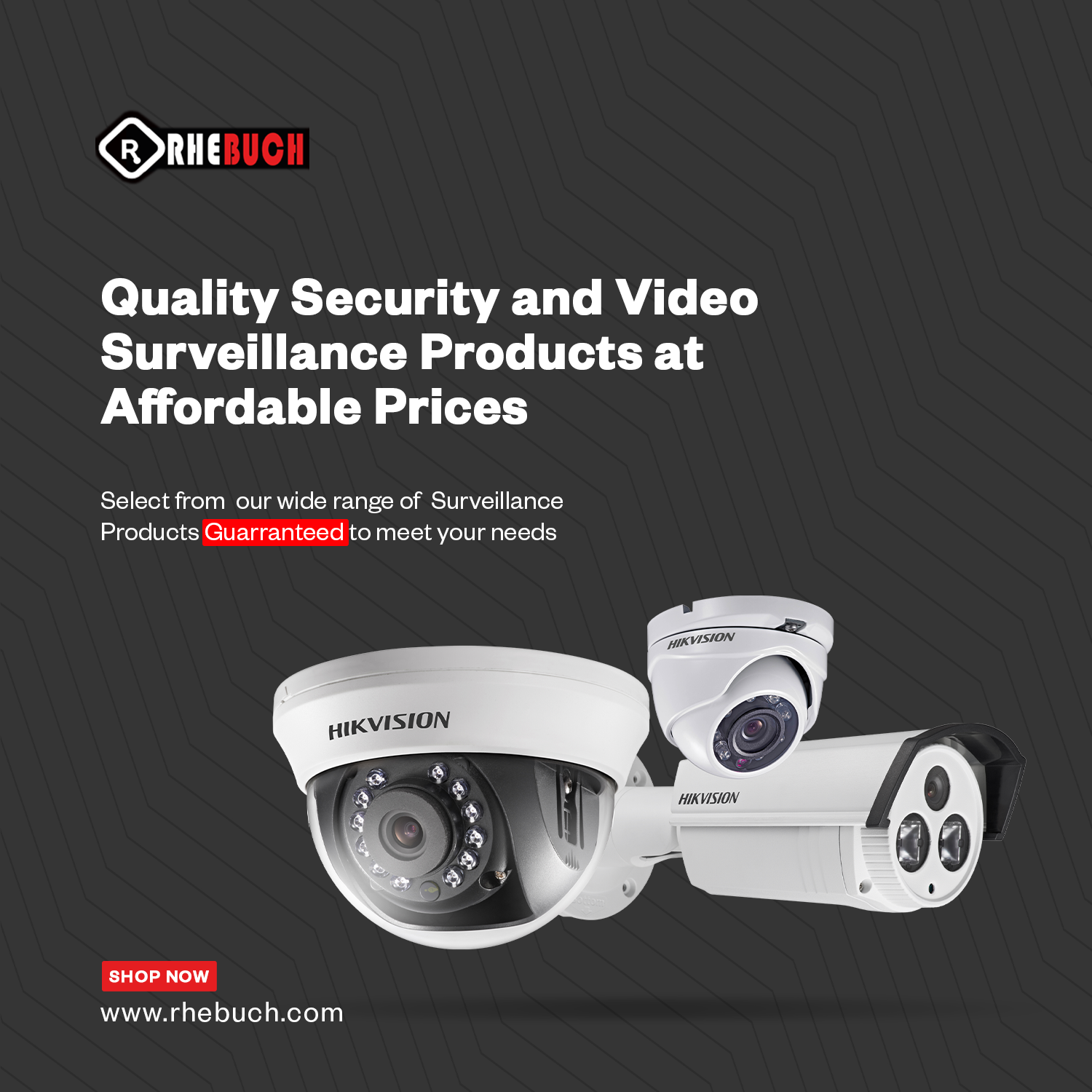BUSINESS
Management By Objectives

Management By Objectives
Effective management is essential for leading firms to success in the quickly changing business environment of today. Management by Objectives (MBO) is one strategy that has been increasingly well known over time. Peter Drucker, the father of management, created the MBO, which places a strong emphasis on goal-setting, coordinating individual work with organizational objectives, and enabling staff members to take responsibility for their work. In addition to discussing the benefits and guiding principles of MBO, this article offers helpful advice for putting it into practice in businesses: “Management By Objectives”
MEANING OF MANAGEMENT BY OBJECTIVE
Management by objectives (MBO) is a strategic management model that aims to improve the performance of an organization by clearly defining objectives that are agreed to by both management and employees. According to the theory, having a say in goal setting and action plans encourages participation and commitment among employees, as well as aligning objectives across the organization.
Understanding Management By Objective
At its core, MBO is a collaborative goal-setting process that fosters employee engagement by aligning personal objectives with organizational goals. It involves the following key steps:
- Defining organizational goals: Clear objectives are established by top-level management, ensuring alignment with the company’s vision, mission, and strategic goals.
- Cascading objectives: Once the organizational goals are set, they are cascaded down to each level of the organization, ensuring alignment and coherence.
- Collaborative goal setting: Managers work together with employees to set individual objectives that contribute to the achievement of broader organizational goals. This encourages employee involvement and accountability.
- Regular tracking and review: Progress towards objectives is regularly tracked and reviewed, providing opportunities for feedback, coaching, and adjustments as needed.
Steps of Management by Objective
These are the steps involved in following through the theory of management by objective:
- Establish organizational goals: Determining the organization’s goals and objectives is the first stage in management by objectives. The organization’s mission, values and long-term plan should all be in line with these objectives. It is imperative that upper management, upper management, middle management and staff members collaborate and communicate clearly in order to guarantee that all parties are aware of and supportive of these goals.
- Set individual objectives: Once the organizational goals are established, the next step is to translate them into individual objectives. Each employee should be involved in this process, discussing and negotiating their specific objectives with their managers. Objectives should be SMART (Specific, Measurable, Achievable, Relevant, and Time-bound) to ensure clarity and effectiveness. The involvement of employees in goal-setting cultivates a sense of ownership, commitment, and enables them to understand how their role contributes to the bigger picture.
- Monitor progress and performance: To guarantee that workers stay on course, regular tracking and assessment of each goal’s progress is necessary. Check-ins, project milestones, or performance evaluations can all be used for these assessments. To assist staff members in overcoming challenges and effectively completing their goals, managers should provide encouragement, direction, and feedback. Monitoring development makes it possible to spot problem areas and take prompt action to guarantee that the objectives of the company are being met.
- Provide feedback and recognition: In the MBO process, feedback is essential. Recognizing their achievements and addressing any problems or difficulties, managers should give their staff members constructive criticism. Good feedback improves employees’ performance overall, encourages them to pursue greatness, and fosters a culture of continuous improvement. Acknowledging and rewarding accomplishments helps to maintain a feeling of accomplishment and provides motivation for regular goal completion.
- Review objectives: In order to adjust to the evolving corporate environment, it is imperative to analyze and assess objectives on a regular basis. Managers ought to evaluate if the set goals are still pertinent, demanding, and consistent with the strategic orientation of the company. To make sure that goals are in line with changing priorities and market conditions, they may need to be modified or updated.
- Foster communication and collaboration: Open communication channels are crucial for successful MBO implementation. Regular meetings, feedback sessions, and collaborative discussions enable employees to share progress, challenges, and lessons learned. Such active communication builds trust, encourages teamwork, and enhances cooperation within the organization. It is crucial to foster a supportive environment where employees can openly share their thoughts, concerns, and ideas for improvement.
Benefits of Management By Objective
MBO is a goal-oriented management philosophy that enhances productivity, fosters employee engagement, and aligns organizational objectives with individual goals. These benefits are outlined below:
- Clear Goal Alignment: Management by Objectives emphasizes setting clear, measurable, and achievable goals that align with the organization’s overall strategy. By collaboratively defining objectives, managers and employees establish a shared understanding of priorities. When everyone is on the same page, it improves coordination and eliminates ambiguity, enabling better decision-making and resource allocation.
- Enhanced Employee Engagement: MBO empowers employees by involving them in the goal-setting process. When employees actively participate in defining their objectives, they gain a sense of ownership and accountability. This involvement fosters motivation, as individuals feel more engaged and connected to the company’s mission. Increased engagement leads to higher levels of productivity and job satisfaction.
- Improved Performance Evaluation: Under the MBO framework, managers and employees establish specific, measurable, actionable, realistic, and time-bound (SMART) goals. These goals provide a clear basis for performance evaluation. Regular progress check-ins and feedback sessions allow employees to understand where they stand and make any necessary adjustments to ensure goal achievement. This transparent evaluation process enhances performance and encourages continuous improvement.
- Increased Communication and Collaboration: Management by Objectives promotes open communication and collaboration across all levels of the organization. As employees have a say in the goal-setting process, there is an increased sense of camaraderie and shared responsibility. Regular meetings to review progress and discuss challenges provide opportunities for collaboration, idea-sharing, and problem-solving. Effective communication and teamwork are vital for achieving objectives efficiently and effectively.
- Focus on Development and Growth: By setting objectives that align with personal and professional development, MBO creates a framework for individual growth within the organization. Employees have the opportunity to identify their skill gaps, pursue professional development opportunities, and work towards their long-term career aspirations. This focus on growth not only benefits individual employees but also contributes to the overall talent development and retention within the organization.
- Strategic Alignment: One of the key benefits of MBO is its ability to align individual goals with the organization’s strategic objectives. By ensuring that each employee’s objectives contribute to the overarching goals of the company, MBO ensures a focused and cohesive approach to achieving success. This strategic alignment helps enhance overall organizational efficiency and effectiveness.
Implementing Management by Objectives can be a game-changer for any organization seeking to achieve its goals and objectives more effectively. From clearer goal alignment to increased employee engagement, improved performance evaluation, enhanced communication, and collaboration, and a stronger focus on growth, the benefits of MBO are numerous. See
Implementing Management By Objective
To successfully implement MBO within an organization, consider the following tips:
- Establish a culture of goal clarity: Communicate organizational goals consistently and ensure they are understood by all employees. This helps create a shared vision and purpose.
- Foster participative decision-making: Encourage employees to actively participate in the goal-setting process, allowing them to provide input and suggestions. This increases their commitment and buy-in.
- Provide regular feedback and support: Managers should provide ongoing feedback and support to employees to ensure progress is on track. This allows for timely adjustments and prevents any potential roadblocks.
- Implement effective tracking and monitoring systems: Utilize performance management software or tools to effectively track progress, allowing for real-time insights and analysis.
- Continual evaluation and adaptation: Regularly evaluate the effectiveness of the MBO process and make necessary adjustments to align with changing business needs and employee development.
Conclusion
Implementing management by objectives can be a game-changer for any organization seeking to achieve its goals and objectives more effectively. In today’s dynamic and competitive business landscape, effective management is crucial for an organization’s success.
More from my site
BUSINESS
Enlumi launches Next-Gen business management platform – Lumi Business to help businesses streamline key operations

Enlumi launches Next-Gen business management platform – Lumi Business to help businesses streamline key operations
Enlumi, headquartered in Lagos has announced the launch of its B2B product—Lumi Business. The platform offers a comprehensive array of solutions, including but not limited to Point of Sale, Inventory Management, Accounting, Expense Management, Loyalty Management and analytics.
As a retail business in Nigeria it’s long been believed that having a modern payment collection device is enough to run the business and the rest is left to chance, instinct, or clunky, outdated softwares and tools. However, to thrive in the market, businesses need much more. Business owners frequently struggle with inventory-related challenges such as surplus, slow-moving stock, expired items, stockouts of high-demand products, and employee theft, all of which can result in revenue loss or tied-up business capital.
Lumi Business is tailored to tackle the inventory requirements of businesses, irrespective of their size, stock quantity, or staff strength. It efficiently simplifies sales tracking, expenses, and facilitates the management of customers, products, services, raw materials, ingredients, and recipes. By leveraging the Lumi Business platform, business owners gain access to data-driven insights that inform decision-making, thereby enhancing sales and maximizing overall business profitability.
Wait there’s more! Lumi Business has a cloud-based multi-store management system, which enables business owners to exert full control over their operations from any location worldwide, using any device. Its storefront feature allows business owners to start up virtual stores and sell online. This capability allows them to monitor stock movements effectively and mitigate issues such as employee theft, lost products, and wastage.
Over 300 SMEs in Nigeria trust Lumi Business to manage their day to day operations, particularly due to its robust features and user-friendly interface. The company looks forward to growing its reach and capabilities as it actively pursues partnerships with other platforms serving SMEs.
Speaking on the launch, Wale Adeniji, Enlumi Data’s CEO said “We firmly disagree with the notion that Nigerian business owners aren’t ready for more than basic payment collection tools.
We’ve seen that businesses in Nigeria are ready for more advanced solutions, they just need to be delivered the right way. We’re focused on building a business management solution that Nigerian businesses are crying out for, addressing a myriad of pain points all at once”. Click here to learn more about Lumi Business or visit www.lumibusiness.io
More from my site
BUSINESS
Rhebuch: Best Place To Buy Quality And Affordable Security Surveillance Cameras In Nigeria

Rhebuch: Best Place To Buy Quality And Affordable Security Surveillance Cameras In Nigeria
The world is already going digital with the spate of innovations that are constantly released to drive convenience and comfort. It often comes with the sense that technology is the present scope shaping the future. There are many tech products in homes, offices, and other places today, with respective designs to serve relative purposes for human causes. This is because of how effective and efficient they are in making life easy for us as a people.

Meanwhile, it is common knowledge that security is a serious business – concerning the safety of lives and property. As such, adopting technology takes cognizance of this through developing tools or gadgets capable of improving security across space and time. One such piece of equipment is the security surveillance cameras- designed to give real-time information about happenings around the vicinity of the installation. Although these have been around for quite some time, their relevance to enhancing security and safety has not waned, especially as they continue to improve.
Nigerians are not new to using security surveillance cameras, as you can find them at homes, offices, shopping centers, religious centers, banks, estates, streets, etc. But while some people believe the cost of acquiring these gadgets is expensive, others are skeptical of their effectiveness – both untrue. Rhebuch is changing this age-long narrative by providing quality and affordable security surveillance cameras to Nigerians.
What Is Rhebuch?
Rhebuch is a technological company that is a multi-brand distributor of smart homes, video surveillance, fire alarms, access control, smart lighting systems, and many more. Therefore, it is your one-stop shop to buy all automation systems for your home or office. This company is reputed for providing the latest global standard equipment to foster the safety and security of lives and property in Nigeria.
There are CCTV cameras of different brands on Rhebuch – some of which include DAHUA 4HDD EPoE, DAHUA 24-port Unmanaged PoE switch, DAHUA 8MP IR fixed-focal dome network camera, Hikvision fixed dome network camera, DAHUA unmanaged desktop switch, etc.
Therefore, Rhebuch is the leading place to buy your security surveillance cameras, as there are many benefits from shopping on this platform.
Benefits Of Shopping For Security Surveillance Cameras On Rhebuch
1. Affordable And Quality Cameras
Rhebuch operates in sync with its mission of providing its customers with the best and latest gadgets in the marketplace – which it still upholds. As such, this platform is where affordability and quality melt, such that you purchase original security surveillance cameras at the best prices that are relatively lower than its competitors.
For instance, you can buy a DAHUA fixed focal dome network camera for as low as N75,000, cheaper than other marketplaces selling the camera. Therefore, you are saving more when you buy on Rhebuch.
2. Multiple Camera Options
Rhebuch provides a wide range of options when buying your security surveillance cameras. This is because they vary in type, purpose, and price, making the platform a store for every budget. This aims to change the misconception that these cameras are expensive or ineffective. You can find your preferred security camera with a particular focal dimension and coverage on Rhebuch without buying whatever is available.
3. Fast And Free Delivery
You are eligible for fast and free delivery when you purchase security surveillance cameras and other systems on Rhebuch. This is to make the logistics of your purchased products seamless through its unique way of proving that the company is highly customer-centric. Therefore, your cameras will be delivered to the platform within 24 hours of purchase.
4. Fast Returns
Rhebuch allows its customers to return their purchased products if they are no longer interested or unsatisfied. Irrespective of the reason, if it is valid, there is a window for you to return your camera for another. You can complete the return process on the platform within 24 hours.
5. Discount Offers
You can get the best deals for purchasing security surveillance cameras on Rhebuch. This is always available during special sales seasons, where you will have price slashes for your sales. It can go as high as a 30% discount on the platform. That is why it is important to always keep up with the sales and deals on the platform so as not to miss out.
Conclusion
You can get quality security cameras in your home or office at the best prices on Rhebuch, as it boasts a large customer base that trusts the platform for security and safety automation needs. So you can buy all your security gadgets on Rhebuch to give you the sense of safety you desire.
More from my site
BANKING
Financial Analysis: A Comprehensive Study of The Well-Being of A Country

Financial Analysis: A Comprehensive Study of The Well-Being of A Country
Understanding the financial stability of a country requires a thorough understanding of financial analysis. In order to offer insights into the overall financial stability and overall wellness of the country, it entails evaluating a range of economic indicators, financial performance, and market movements.
In this article, we will delve into the fundamentals and importance of financial analysis in evaluating a country’s economic situation.
THE HISTORY ABOUT FINANCIAL ANALYSIS
Ancient Beginnings:
The roots of financial analysis can be traced back thousands of years. The ancient Mesopotamians, Egyptians, and Greeks were among the pioneers of documenting financial transactions, creating basic records of assets and liabilities. These early attempts laid the groundwork for the concept of financial analysis through the study of financial statements and ledgers.
Medieval Europe:
During the Middle Ages, Europe witnessed the rise of merchant guilds and the emergence of double-entry bookkeeping. Italian mathematician and Franciscan friar, Luca Pacioli, is often credited with formalizing double-entry bookkeeping, publishing his seminal work “Summa de arithmetica, geometria, proportioni et proportionalita” in 1494. The concept of balancing debits and credits within financial records formed the basis for modern financial analysis techniques.
Industrial Revolution:
The Industrial Revolution in the 18th and 19th centuries revolutionized business and the need for financial analysis grew rapidly. As companies expanded and diversified, investors began demanding more comprehensive financial reports to assess the potential risks and returns of their investments. The birth of limited liability companies further accelerated the need for financial analysis, as shareholders sought transparency in the performance of their investments.
Modern Era:
The 20th century witnessed significant advancements in financial analysis techniques. The advent of electronic computing in the mid-1900s enabled the processing and analysis of vast amounts of financial data, leading to the development of sophisticated financial models and ratios.
The Great Depression of the 1930s laid the groundwork for modern financial analysis as regulators sought effective ways to prevent future economic crises. The establishment of the U.S. Securities and Exchange Commission (SEC) in 1934 brought about standardized reporting requirements, including the filing of audited financial statements. This increased transparency and standardized financial reporting provided analysts with a more accurate and consistent basis for their analysis.
The Rise of Quantitative Analysis:
In the latter half of the 20th century, the growth of computing power and the availability of large data sets propelled financial analysis into new territory. Quantitative analysis, utilizing statistical models and mathematical algorithms, started gaining prominence. Financial analysts began incorporating complex mathematical methods to assess investment opportunities, risk management, and portfolio optimization.
Modern Financial Tools:
With the advent of the internet and the digital age, financial analysis has become even more accessible and data-driven. Sophisticated software programs, data analytics tools, and artificial intelligence have revolutionized the way financial data is analyzed and interpreted. In recent years, technologies like machine learning have been leveraged to develop predictive models that can assess future trends and make accurate financial forecasts.
MEANING
Financial analysis is the process of evaluating businesses, projects, budgets, and other finance-related transactions to determine their performance and suitability. Typically, financial analysis is used to analyze whether an entity is stable, solvent, liquid, or profitable enough to warrant a monetary investment.
Financial analysis is a fundamental tool that allows organizations and individuals to assess the past, present, and future financial health of a business or investment. Through a systematic examination and interpretation of financial statements, ratios, and other key indicators, financial analysis helps in making informed decisions, optimizing resources, and improving overall financial performance. In this article, we will delve into the meaning of financial analysis, its prominent components, and its significance across various sectors.
Financial analysis involves scrutinizing financial data to evaluate the performance and profitability of an entity. It assists in quantifying the effectiveness of financial decisions, identifying trends, predicting future outcomes, and benchmarking against industry standards. By analyzing financial statements, investors, analysts, and other stakeholders gain valuable insights into the financial position, liquidity, solvency, and operational efficiency of an organization.
FUNDAMENTALS OF FINANCIAL ANALYSIS IN A COUNTRY
- Gross Domestic Product (GDP): GDP is a primary indicator used to gauge the economic performance of a nation. Financial analysts analyze GDP growth rates and its components, such as consumer spending, government expenditure, investments, and net exports. This analysis helps in determining the overall strength of the economy and identifying areas of potential growth.
- Trade and Balance of Payments: Trade analysis focuses on a country’s imports, exports, and balance of payments. Evaluating trade patterns helps identify sectors driving the country’s economic growth, trade imbalances, and potential risks to the economy from external factors such as changes in global demand or disruptions in supply chains.
- Inflation and Interest Rates: Analyzing inflation rates and interest rates provides insights into the stability of a country’s economy. High inflation erodes purchasing power, while high-interest rates can impact borrowing costs, affect consumer spending, and investment behavior. Financial analysts assess the impact of inflation and interest rates on an economy’s overall competitiveness and economic growth potential.
- Government Debt and Fiscal Policy: Analyzing a country’s government debt levels and fiscal policy is crucial in understanding its financial sustainability. A high level of government debt may lead to increased borrowing costs, reduced investor confidence, and potential risks to economic stability. Evaluating fiscal policies helps determine whether a country is managing its finances effectively and implementing sustainable economic growth strategies.
- Stock Market Performance: The stock market reflects investor sentiment and provides valuable insights into a country’s economic outlook. Analysts evaluate key stock market indices, such as the country’s primary exchange, sector-specific indices, and market capitalization trends. Monitoring stock market performance allows for an understanding of investor confidence, economic growth expectations, and potential risks to the financial system.
- Banking Sector and Financial Institutions: A robust banking sector is essential for economic stability. Financial analysts assess the health of the banking system by evaluating indicators such as non-performing loans, capital adequacy ratios, and the overall stability and soundness of financial institutions. Understanding the well-being of financial institutions helps gauge the potential risks to the overall economy, including credit availability, liquidity, and financial contagion.
- Regulatory Environment and Governance: The regulatory environment and governance play a critical role in attracting investment and fostering economic growth. Financial analysts assess the effectiveness of regulatory frameworks, transparency in financial transactions, and the overall credibility and efficiency of institutions responsible for enforcing regulations. Evaluating the regulatory environment aids in understanding potential risks and opportunities for sustainable economic development.
SIGNIFICANCE OF FINANCIAL ANALYSIS IN A COUNTRY
Financial analysis plays a vital role across various sectors, serving the following purposes:
- Evaluating Financial Performance: By conducting a comprehensive financial analysis, companies can assess their performance, profitability, and financial stability. This, in turn, helps in identifying areas for improvement, developing strategic plans, and making sound financial decisions.
- Assessing Investment Viability: Investors rely on financial analysis to evaluate the profitability and risks associated with potential investments. Through detailed scrutiny of financial data, investors can determine the financial health and growth prospects of a company, aiding in making informed investment decisions.
- Facilitating Lending Decisions: Financial institutions utilize financial analysis to assess the creditworthiness of loan applicants. By analyzing financial statements, evaluating ratios, and assessing the risk profile, lenders can ascertain the borrower’s ability to repay loans and make sound lending decisions.
- Supporting Strategic Decision-Making: Financial analysis aids in strategic decision-making, such as expansion, diversification, or mergers and acquisitions. Understanding a company’s financial position and performance provides a foundation for evaluating the feasibility and potential outcomes of such decisions.
CONCLUSION
Conducting a comprehensive financial analysis provides valuable insights into the economic landscape of a country. By evaluating indicators such as GDP, trade patterns, inflation rates, government debt, stock market performance, banking sector health, and regulatory environment, financial analysts can gauge the overall financial health, identify potential risks, and recommend strategies for sustainable economic growth. Accurate and timely financial analysis acts as a compass, guiding policymakers, investors, and businesses to make informed decisions and contribute to the overall prosperity of the nation.
More from my site
-
EDUCATION2 years ago
Jamb Cut-Off Mark for A Law Degree in Nigerian Universities
-
BANKING2 years ago
POLARIS Bank Transfer Code| How to Activate the USSD Banking Code
-
BANKING2 years ago
Union Bank Transfer Code| How to Activate the USSD Banking Code
-
BANKING2 years ago
FIRST Bank Transfer Code| How to Activate the USSD Banking Code
-
BANKING2 years ago
How to Check UBA Account Balance From Anywhere
-
BANKING2 years ago
GT Bank Transfer Code| How to Activate the USSD Banking Code
-
BANKING2 years ago
Check GTB Account Balance via Internet and USSD Code
-
BANKING2 years ago
ZENITH Bank Transfer Code| How to Activate the USSD Banking Code



















![Car [Automobile] Insurance In Nigeria](https://financialquest.com.ng/wp-content/plugins/wordpress-23-related-postXs-plugin/static/thumbs/17.jpg)















